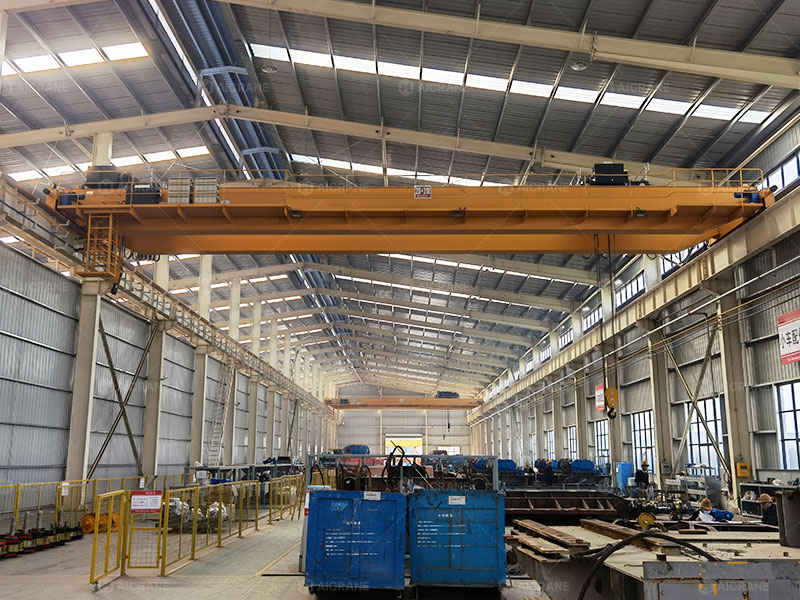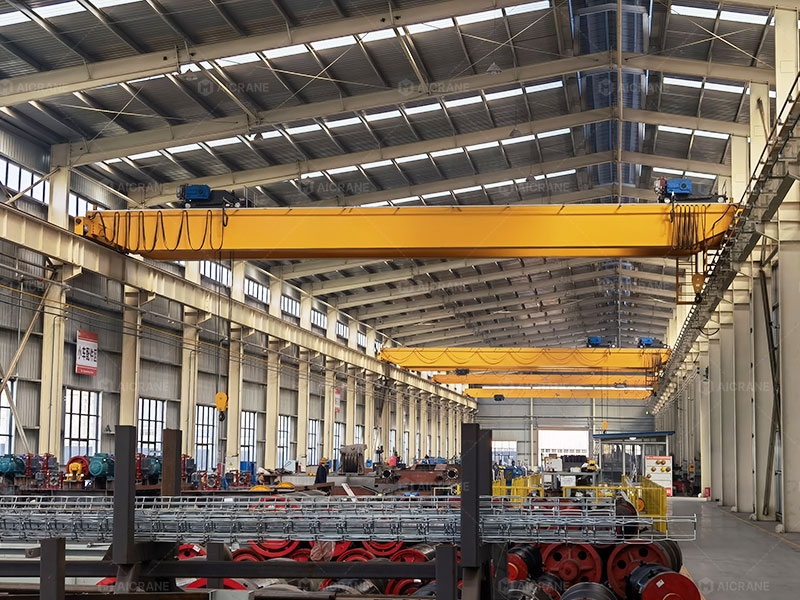Purchasing a 40-ton overhead crane is a significant investment for any manufacturing or industrial facility. Overhead cranes are essential for lifting, transporting, and positioning heavy loads safely and efficiently. However, the final price of a 40-ton overhead crane is not fixed – it varies depending on several customization options tailored to specific operational needs. Understanding these factors can help companies make informed decisions while optimizing both cost and performance.

1. Crane Type and Structure
One of the most significant factors influencing the 40 ton overhead crane price is the type and structural design. There are primarily two types of overhead cranes: single girder and double girder.
-
Single Girder Cranes: These cranes have one main beam and are generally more cost-effective. They are ideal for lighter applications and spans up to 20 meters. For heavy-duty operations with a 40-ton load, single girder cranes are less common but can still be customized for specific scenarios.
-
Double Girder Cranes: Double girder cranes have two main beams and offer greater load capacity, higher lifting height, and enhanced stability. Due to their structural complexity and material usage, double girder cranes are more expensive. The choice between single and double girder will directly impact the price.
Additionally, the crane span – the distance between runway beams – affects the material requirements and fabrication costs. Longer spans require more steel and precise engineering, increasing overall price.
2. Lifting Height and Hook Design
The lifting height or hook height is another critical customization affecting cost. Higher lifting heights require longer hoist ropes or chains, additional trolley travel mechanisms, and sometimes increased structural reinforcement to maintain stability.
-
Standard Hook Heights: Typically cost less because they require fewer materials and simpler engineering.
-
Customized or High Hook Heights: Increase the price due to additional steel, specialized hoists, and more precise control systems.
The hook design—single, double, or specialized multi-hook configurations – also impacts pricing. For instance, cranes designed to handle bulky or irregular loads may require custom hook arrangements, which increase manufacturing costs.
3. Hoist Type and Power
The hoist is the heart of an overhead crane, responsible for lifting and lowering loads. For a 40-ton crane, the choice of hoist greatly affects the price of overhead crane. The main types include:
-
Electric Wire Rope Hoists: These are suitable for heavy loads and high lifting heights. They are more durable and provide smoother operation but are more expensive than chain hoists.
-
Electric Chain Hoists: Typically more economical but less suitable for extremely heavy or high-duty applications. For 40-ton cranes, they are rarely used except in specific short-lift scenarios.
-
Hydraulic Hoists: Offer precise lifting control, ideal for delicate operations but are costly due to the hydraulic system’s complexity.
The hoist’s lifting speed, duty cycle, and control type (manual, pendant, or remote) also influence pricing. Higher-speed hoists and frequent-duty-rated hoists cost more because they require robust motors, gearboxes, and advanced safety features.

4. Control System Options
Customization in control systems can significantly impact the 40-ton double girder overhead crane price. Operators can choose from:
-
Pendant Control: A cost-effective option, ideal for standard lifting operations.
-
Radio Remote Control: Offers mobility and flexibility, allowing operators to control the crane from a safe distance.
-
Cabin Control: Suitable for large facilities where continuous operation is required, providing operators with a clear view and ergonomic comfort.
Advanced control systems may also include variable frequency drives (VFDs) for smoother acceleration and deceleration, anti-sway control, and positioning systems, all of which increase the initial investment but improve operational efficiency and safety.
5. Materials and Coatings
The type of materials used in crane construction and protective coatings affects both durability and price:
-
Steel Quality: High-strength, low-alloy steel ensures crane stability and longevity but is more expensive than standard structural steel.
-
Protective Coatings: For outdoor or corrosive environments, cranes may require specialized paint, galvanization, or anti-corrosion coatings. These additional treatments increase manufacturing costs.
Custom finishes and coatings tailored for extreme conditions—such as high humidity, coastal areas, or chemical plants—further raise the price.
6. Environmental and Operational Considerations
Customizations for environmental conditions are often necessary for safe crane operation:
-
Outdoor Operation: Requires weatherproof components, UV-resistant coatings, and sometimes enclosures for motors and electrical parts.
-
High-Temperature or Low-Temperature Environments: Cranes operating in extreme temperatures may require specialized steel, lubricants, and insulation.
-
Dusty or Corrosive Environments: Cranes in mining, chemical, or cement plants may need sealed hoists, special dustproof cabins, and corrosion-resistant materials.
These environmental adaptations increase cost but are essential for maintaining safety and reliability.
7. Safety Features and Accessories
Safety is a critical concern for any 40-ton overhead crane. Customizations to improve safety also affect price:
-
Overload Protection Systems: Prevent cranes from lifting beyond their rated capacity.
-
Anti-Collision Devices: Avoid collisions in facilities with multiple cranes.
-
Limit Switches: Ensure accurate stopping at end positions.
-
Load Monitoring Systems: Provide real-time data to prevent accidents and extend crane life.
Additional accessories like electric hoist brake systems, emergency stop buttons, horn alarms, and LED indicators also contribute to the overall cost.
8. Installation and Maintenance Customizations
The cost of a crane is not limited to manufacturing; installation and maintenance requirements can also impact the total investment:
-
Foundation Design: Custom foundations for heavy-duty cranes are sometimes necessary, adding to costs.
-
Travel Distance and Rails: Longer crane runways or more complex track layouts increase structural material and installation costs.
-
Ease of Maintenance: Features like inspection platforms, walkways, and modular components increase initial cost but reduce long-term maintenance expenses.
Custom installation services, testing, and commissioning also need to be factored into the overall price.
9. Special Application Requirements
Some industries require specialized cranes for unique lifting tasks. For example:
-
Steel Mills and Foundries: May require heat-resistant cranes or cranes that handle molten metals.
-
Shipyards and Ports: May need cranes with long spans and high lifting heights for containers or ship components.
-
Power Plants: Require precision lifting cranes for heavy equipment with strict safety standards.
Each industry-specific customization increases the price because it requires engineering expertise, additional safety systems, and specialized components.
10. Conclusion
The price of a 40-ton overhead crane is influenced by a wide range of customization options, including crane type, lifting height, hoist type, control systems, materials, environmental adaptations, safety features, installation requirements, and special applications. While these customizations increase upfront costs, they ensure that the crane meets operational requirements, improves efficiency, and maintains safety and reliability over the long term.
When considering a 40-ton overhead crane purchase, it is essential for businesses to evaluate their specific needs and work with a reputable eot crane manufacturer to determine which customizations are necessary. By doing so, companies can optimize both the performance and cost-effectiveness of their overhead crane investment.